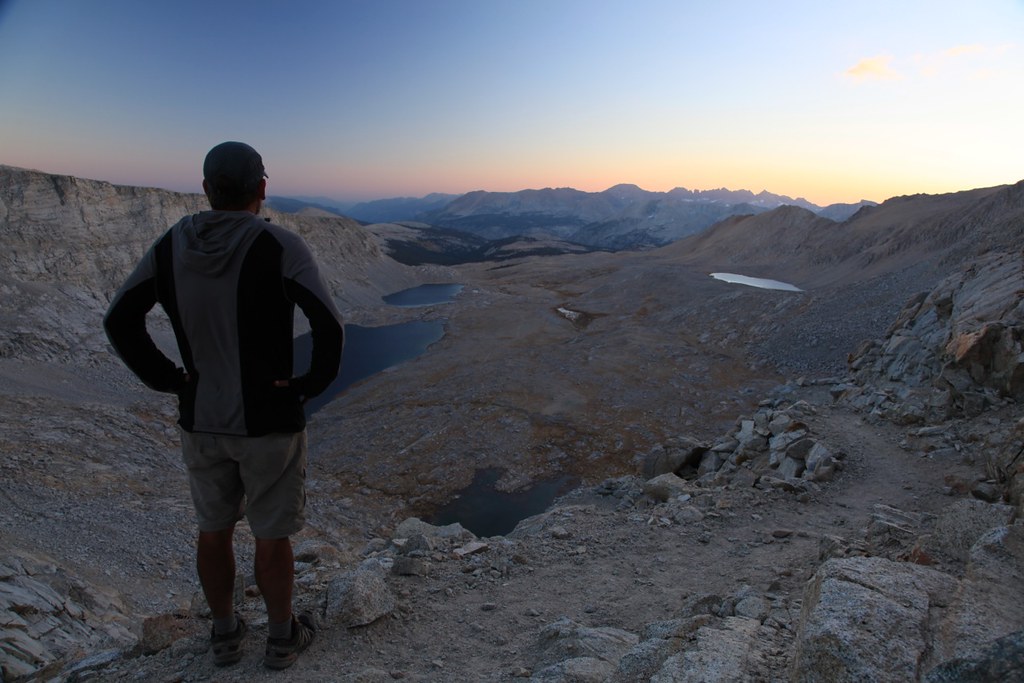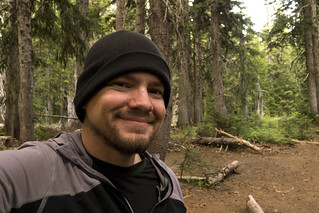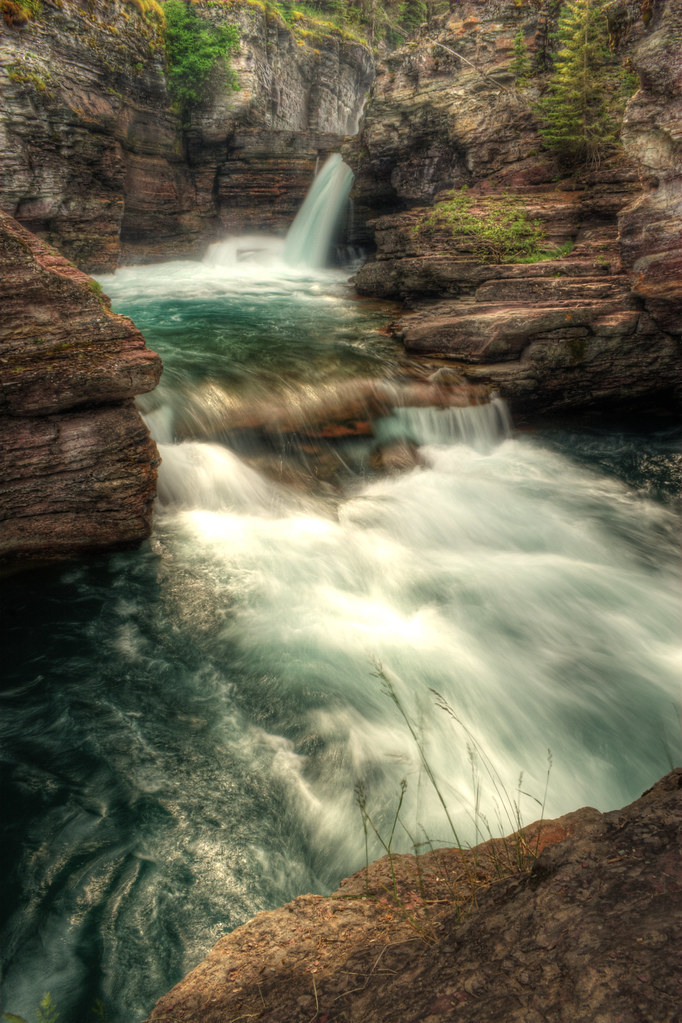 |
| Saint Mary Falls, Glacier National Park |
In my previous post on
using bleach to treat water in the backcountry, I said my method for treating water is a combination of household bleach and an inline filter. You might be wondering why I would use both. Especially since most people only use one or the other and some don't treat their water at all...
read more >
Water in the backcountry is much cleaner than what most people would expect, especially at high elevations, but even if the risk of infection is small, there is still a risk. Even experienced backpackers know it isn't always easy to find a good water source, and equip themselves with some kind of water treatment method.
A common reason people give for not treating their water is that they have been drinking it their whole life and so are immune to pathogens. This is not entirely true and more a testament to how rare infections are with experienced backpackers than anyone having a super-human immune system. For example, it is highly unlikely that you will ever become immune to Giardia, the most common water-borne pathogen in the backcountry. Giardia requires repeated infections to acquire any measure of immunity, and even then, your chance of carrying it without symptoms is less than 10%. You can get Giardia again and again and again.
Another reason I've heard, is that chemical treatments are more harmful. This is also not always true if proper chemical treatments are used correctly. This is also not a good argument for not taking a water filter.
I met four people who have contracted Giardia, and one person who got it twice. The consensus seems to be that the minor inconvenience of treating water is better than 2-4 weeks of nausea, fatigue, cramps, and the never-popular explosive diarrhea. Also, consider the fact that you're in the backcountry with no indoor plumbing and a limited toilet paper supply... Water treatment can be as lightweight as 1 ounce, as cheap as $1, and as small as a 1-ounce eyedropper of bleach, so it's worth taking.
If I was only going to take one treatment method, it would be a .1 micron inline or straw filter every time, but below are good arguments for carrying both.
- It's good to have a backup method... read more >
In over 3,000 trail miles, I have both lost and broken a filter. I have also discovered too late that a filter did not work (a few miles into my hike to Mount Katahdin). I have run out of chemical treatments before reaching a resupply town and have forgotten it altogether. These are enough reasons for me to have a backup method, especially when the methods are so lightweight. Bleach 1 ounce, filter 3 ounces.
- Filters allow me to drink up at the source and carry less... read more >
When water is plentiful, and I have a filter, I've noticed I carry 16 fewer ounces when I leave a water source. It's because I can drink all I want immediately from the source without waiting for chemical treatments to be effective (usually 30 minutes). And since inline/straw filters are so easy to use, I don't mind stopping multiple times to get water. I don't even have to take off my pack.
The heaviest filter I own is a
Katadyn Hiker Pro at 12 ounces, so the lighter weight of only carrying a chemical treatment ends up not being much an advantage.
Also, the water is typically colder at the source than it will be thirty minutes after a bleach treatment. This is appreciated on a hot day.
- An eyedropper of bleach only weighs 1 ounce, so even though I prefer an inline or straw filter, 1 ounce isn't a noticeable addition to my pack.
- Filters, unlike any chemical treatment, are very effective at removing Cryptosporidium and Giardia, the two most common water-born illnesses in American backcountry... read more >
Both of these protozoans live in a cyst, which help protect them from chemical treatments. Filters less than or equal to 1 micron can easily remove them.
- Bleach is very effective at removing viruses and bacteria, filters are not... read more >
Most filters cannot remove viruses, and only filters less than or equal to .1 micron can remove bacteria. Chemical treatments, such as bleach, can easily kill both.
- Bleach can be used to sterilize my toothbrush and eating utensil... read more >
Add 4-5 drops per 8 ounces of water in your cook pot and soak for 30 minutes. Every thru-hiker knows how nasty a toothbrush can get after weeks in the backcountry.
- Filters improve taste... read more >
Some water just tastes bad before or after chemical filtration. Additionally, if the water is already very clean before a chemical treatment, or if you over treat it, you may taste the chemical in your water. Think of chemical treatments as adding an army of soldiers to your water to do battle. They kill organisms, but die in the process. The more organisms there are to kill, the more soldiers you need. If you add more troops than you need, you might get a stronger chemical taste. The filter helps this.
My preferred filter:
 |
| Sawyer Squeeze Filter |
With the variety of filters on the market, I haven't found a good reason to continue using my traditional pump-style filter. If I can help it, I'd rather not get down on my knees, dangle a filter hose in water, and pump it into a bottle. I prefer inline or straw filters.
 |
| 4-Way Filter Bottle |
Rather than pump water through the filter, an inline or straw filter uses your suction to filter as you sip. You can just scoop and go, without having to take off your pack. And to fill a cook pot, you can use gravity or squeeze the water from the pouch or bottle.
When on a trail with plenty of water sources, it's not inconvenient to get water, so I don't carry around as much water weight. In addition, the inline filters themselves are also lighter than a pump filter.
My favorite inline/straw filter is the Sawyer Squeeze Filter or the Sawyer 4-Way Filter Bottle. Here is why:
- They have a .1 micron filter... read more >
A .1 micron filter will remove 99.99999% of protozoa/cysts, like Giardia and Cryptosporidium, and bacteria, like e.coli.
- Multiple ways to use... read more >
In addition to the water pouches that come with the Squeeze Filter, you can attach it to most threaded soda or water bottles including 2-liter bottles. This is how I usually use it. The 4-Way Filter Bottle can be attached to wide-mouth bottles like a Nalgene bottle. The 4-Way Filter, and the squeeze filter with the optional attachment, can also connect it to a hydration bladder hose and used as an inline filter.
- Easy to use... read more >
Fill up your pouch, bottle, or hydration bladder at the water source, attach the filter, and drink. No waiting, no pumping, and if you can reach your water container with your pack on, there's no need to take your pack off. This convenience means I'll stop more frequently for water, and carry less water weight.
With both filters, you can also squeeze the water directly into a cook pot, unlike other filter straws.
- Small and Lightweight. The Squeeze filter with a pouch weighs about 3 ounces, the 4-Way Bottle, about 5.
- Sawyer has a one million gallon guarantee!... read more >
I was skeptical, so I contacted Sawyer. Since most filters quit after a couple hundred gallons, this is essentially an attention-grabbing way of saying it has a lifetime guarantee on the filter element. The guarantee does not include the filter's housing or water pouches, which doesn't concern me since the filter has no moving parts, it's not that easy to break. Also, since the filters can be screwed onto soda bottles or Nalgene bottles, broken pouches or bottles are cheap fixes.
- Easy to clean/backwash... read more >
The Squeeze Filter comes with a syringe so you can easily backwash all the collected muck in the filter. This is one of the reasons it lasts for 1 million gallons. The 4-Way Bottle comes with a sink attachment to do the same.
- Cons, because there is always one, right?... read more >
The hollow fiber filter in Sawyer filters, can break if frozen, so if it is below freezing, you will want to keep it in your pocket during the day and in your sleeping bag at night. Damage from freezing is not covered under Sawyer's 1 million gallon guarantee. The worst of it is, you won't even know if it's not working. If you suspect it was frozen, you'll have to just throw it away.
Some users have had problems with the water pouches that come with the Squeeze Filter ripping open. The pouches are holding up just fine for me so far, but I didn't purchase this filter for the pouches. And I prefer using plastic soda or water bottles anyway...
read more >
- I carry 2-3 plastic water bottles. One 16 oz and one or two 32 oz. That way, I can lose or break a bottle and still have a way to transport water. A hiker with a dog came to my shelter on the Long Trail in Vermont, and the dog decided one of my water bottles was a fun chew toy. I'm glad I had a backup.
- Plastic soda/water/gatorade bottles are free, lighter than Nalgene or aluminum bottles, and they are readily available and otherwise destined for a landfill. One argument I've heard for not reusing plastic soda bottles is that they release dioxins in your water. This is an urban legend. There are no dioxins in plastic soda bottles.
That being said, a group of chemicals called phthalates are sometimes added to plastics to make them flexible and less brittle. These can leach into water if you heat up the plastic. I don't cook with them, so I'm not worried about this. (Reference)
Another reason I've heard, for not reusing plastic soda bottles, is that bacteria can develop under the cap, but these get cleaned regularly during my bleach treatment, so I'm not concerned about that. If you know of any other reasons I shouldn't reuse soda bottles, please let me know at grayson.ryan@gmail.com.
- Nalgene and other hard plastic or aluminum bottles cannot be squeezed to fill my cook pot with the Squeeze Filter. Or to get all the air out to treat the cap and threads when chemically treating the water.
- I've never been a fan of hydration bladders, since they are difficult to get in and out of my backpack, hard to see how much water you have left, and not easy to attach to the outside of any of my packs.
At the time of this post,
Amazon is selling the Sawyer Squeeze Water Filter for $42.38 (Click here to order or read more reviews). For that price, you will get: three lightweight collapsible pouches (0.5 L , 1 L, and 2 L pouch), Sawyer 0.10 Absolute Micron Hollow Fiber Membrane Screw On/Off Water Filter, Replaceable Pop Up Drinking Spout, Cleaning Syringe, and the 1 Million Gallons Guarantee.
The 4-Way Filter Bottle is currently $36.86 at Amazon (Click here to order or read more reviews). For that price, you will get: a 1L water bottle, Sawyer 0.10 Absolute Micron Hollow Fiber Filter, faucet attachment for backwashing, extra straws, hose adapter for hydration bladders, and the 1 Million Gallons Guarantee.
See the Sawyer Squeeze Filter in action:
See the Sawyer 4-Way Filter Bottle in action:
More water related information:
Why I don't use Sterilizing Pens... read more >
- I've seen them fail on other hikers more often than I've seen them work.
- Must use lithium batteries, which are hard to find in small resupply towns. If alkaline batteries are used, you can usually expect to only treat 2-8 quarts, whereas Lithium may last up to 100 quarts.
- Not as effective if water is cloudy or discolored.
- Can leave threads of cap untreated.
- Heavier than my bleach/straw method.
- Expensive.
How much water to carry... read more >
It varies from person to person and depends heavily on the outdoor temperature, but the rule of thumb is: Drink 1/2 to 1 quart of water per hour of hiking. On a hot day climbing up a mountain, your body can lose 1 - 2 quarts per hour from perspiration. It's pretty simple though, if you feel thirsty, drink.
One way to determine how much water you are losing during exercise, is to weigh yourself before and after a hike or workout. Subtract about 7% from the difference in pounds (to account for the burned calories), then multiply by 16. That's about how many ounces of water you need to replace.
Using Bleach To Treat Water in the Backcountry... read more >
Why I use plastic soda or water bottles... read more >
- I carry 2-3 plastic water bottles. One 16 oz and one or two 32 oz. That way, I can lose or break a bottle and still have a way to transport water. A hiker with a dog came to my shelter on the Long Trail in Vermont, and the dog decided one of my water bottles was a fun chew toy. I'm glad I had a backup.
- Plastic soda/water/gatorade bottles are free, lighter than Nalgene or aluminum bottles, and they are readily available and otherwise destined for a landfill. One argument I've heard for not reusing plastic soda bottles is that they release dioxins in your water. This is an urban legend. There are no dioxins in plastic soda bottles.
That being said, a group of chemicals called phthalates are sometimes added to plastics to make them flexible and less brittle. These can leach into water if you heat up the plastic. I don't cook with them, so I'm not worried about this. (Reference)
Another reason I've heard, for not reusing plastic soda bottles, is that bacteria can develop under the cap, but these get cleaned regularly during my bleach treatment, so I'm not concerned about that. If you know of any other reasons I shouldn't reuse soda bottles, please let me know at grayson.ryan@gmail.com.
- Nalgene and other hard plastic or aluminum bottles cannot be squeezed to fill my cook pot with the Squeeze Filter. Or to get all the air out to treat the cap and threads when chemically treating the water.
- I've never been a fan of hydration bladders, since they are difficult to get in and out of my backpack, hard to see how much water you have left, and not easy to attach to the outside of any of my packs.



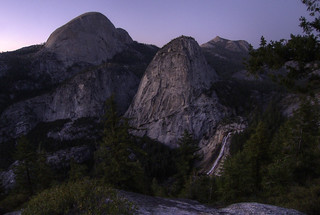
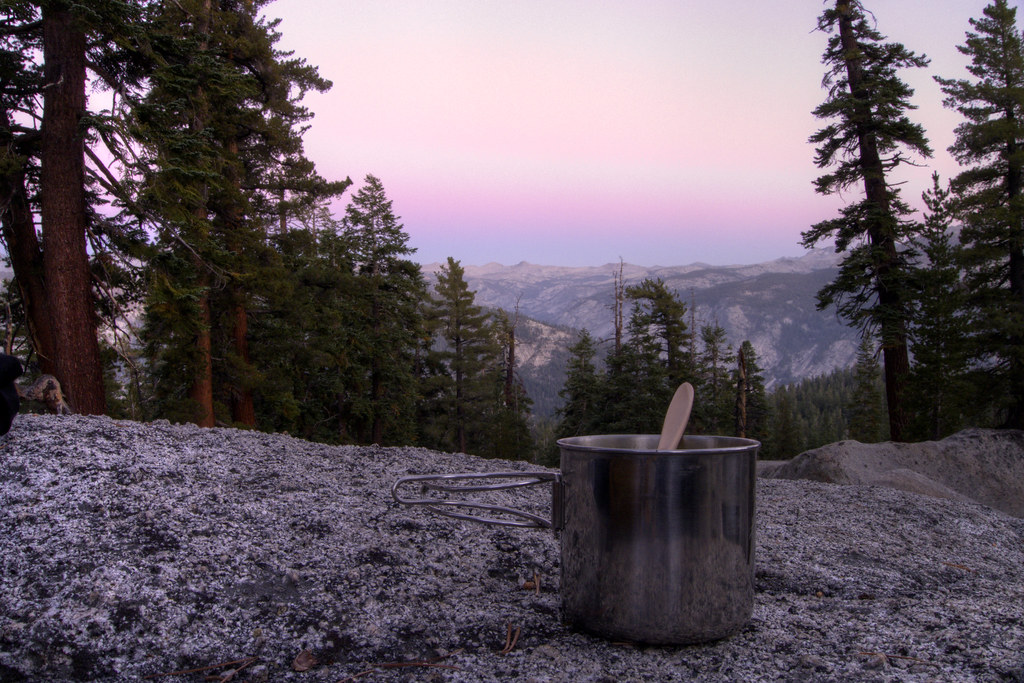
com-s.jpg)
com-s.jpg)
com-s.jpg)
com-s.jpg)
